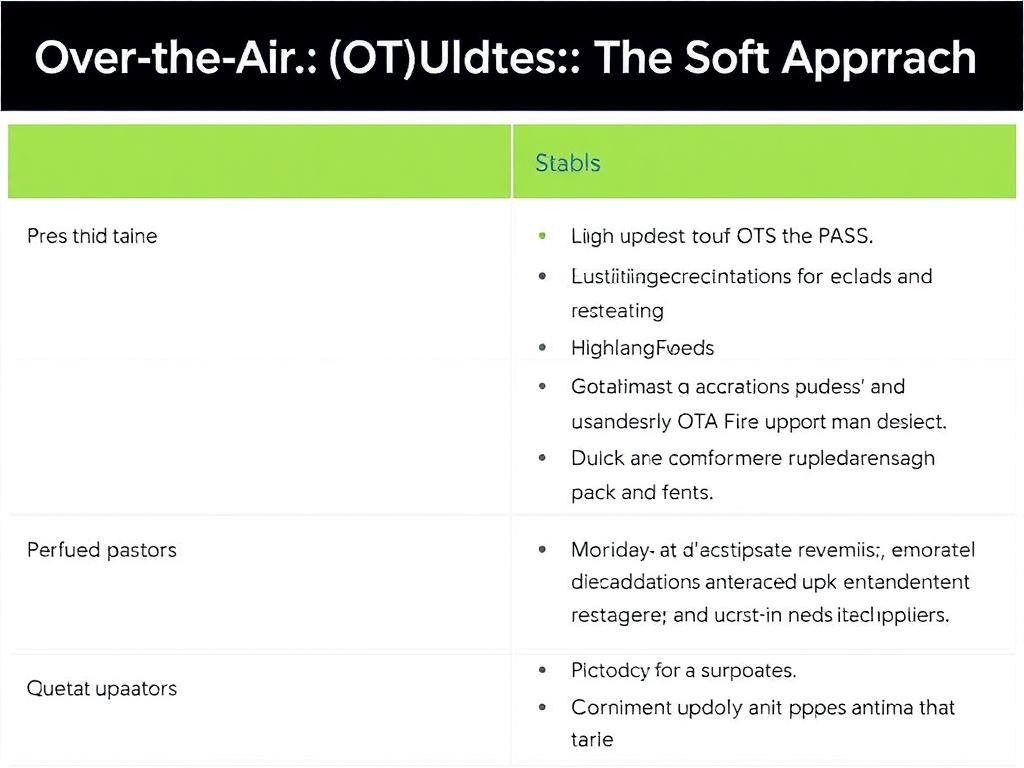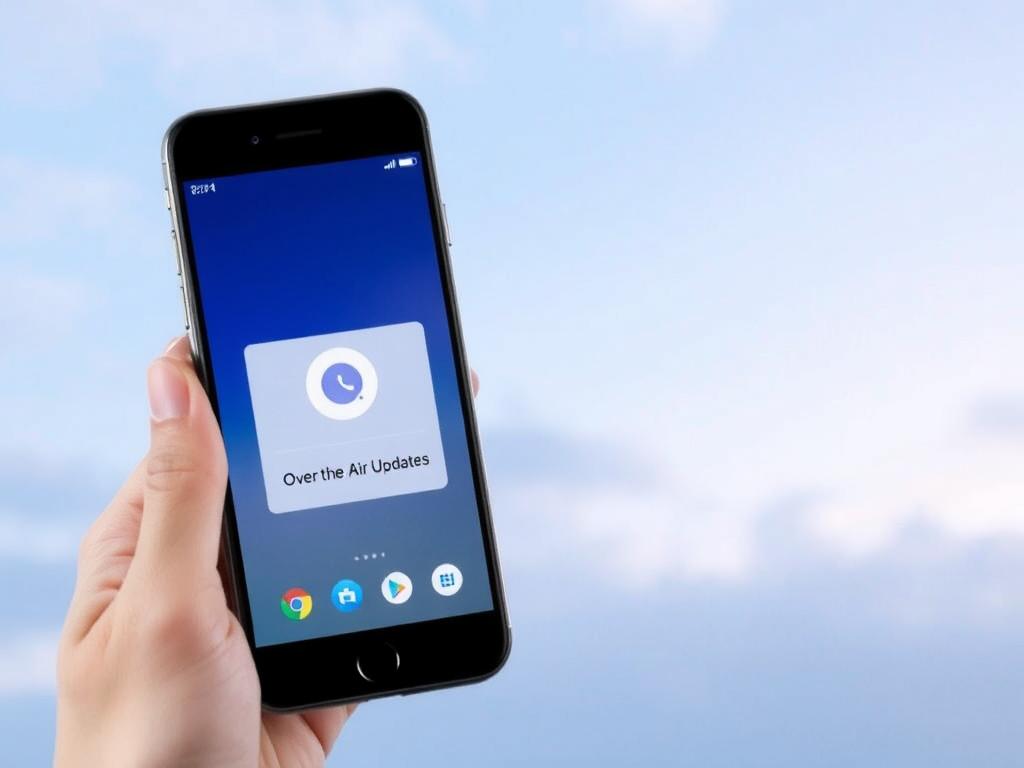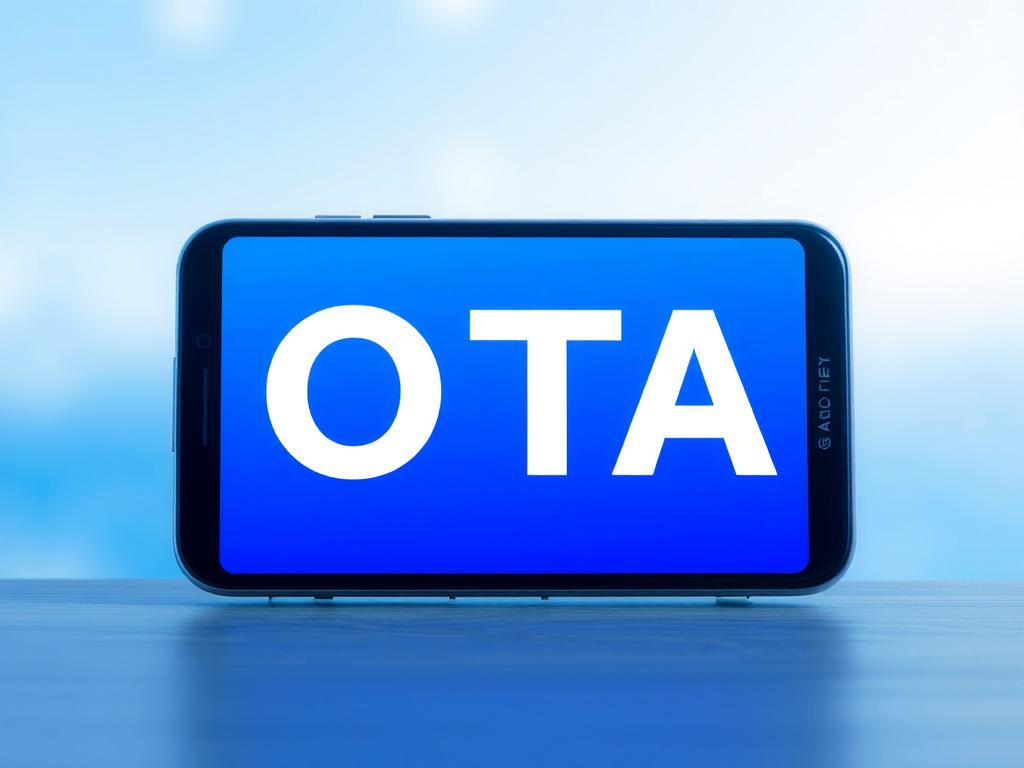In today’s fast-paced digital world, technology evolves faster than ever before. Whether it’s your smartphone, smart TV, or IoT device, keeping software up to date is crucial for optimal performance, security, and new features. Over-the-Air (OTA) updates have become the soft approach that allows manufacturers and developers to deliver these improvements directly to users without the hassle of manual installation. But what exactly are OTA updates, and why have they become an indispensable part of our tech ecosystem? Let’s dive in and explore everything you need to know about this innovative method.
What Are Over-the-Air (OTA) Updates?

An Over-the-Air update, commonly abbreviated as OTA update, is a method of wirelessly distributing software patches, system upgrades, and new features to electronic devices. Unlike traditional update methods that require a device to be connected to a computer or manually downloaded via a memory card, OTA updates happen remotely and automatically over the internet.
From smartphones to smart home gadgets, OTA updates provide a seamless and user-friendly experience. By sending software packages directly to the device, manufacturers ensure that millions of users can stay current with the latest software enhancements, bug fixes, and security patches without any technical know-how.
Why Choose the Soft Approach of OTA Updates?
The soft approach in OTA updates emphasizes a smooth, gentle method of upgrading devices without interrupting the user’s experience significantly. This means no complicated installations or downtime, just a quiet transformation happening behind the scenes. The benefits are numerous:
- Convenience: Updates install automatically or with minimal user interaction.
- Security: Timely distribution of critical patches helps protect devices from emerging threats.
- Cost-Effectiveness: Manufacturers save resources by avoiding physical recall and manual installations.
- Scalability: Updates can reach millions of devices simultaneously around the globe.
How Do Over-the-Air (OTA) Updates Actually Work?
The process of OTA updates involves several carefully orchestrated steps, ensuring the update is delivered efficiently and securely. Here’s a closer look at how this soft approach keeps devices fresh and up-to-date:
| Step | Description |
|---|---|
| 1. Notification | The device receives a notification about an available update either automatically or via a manual check. |
| 2. Download | The update is securely downloaded over Wi-Fi or cellular data to the device’s storage. |
| 3. Verification | The system verifies the integrity and authenticity of the update to prevent malicious interference. |
| 4. Installation | The new software replaces or merges with the existing system files, often during a low-usage period such as overnight. |
| 5. Reboot | The device restarts if necessary to apply changes effectively, minimizing disruption. |
| 6. Confirmation | The system confirms the update’s success and informs the user, or rolls back to the previous version if any issue arises. |
Key Technologies Enabling OTA Updates
Several underlying technologies contribute to the success of OTA updates. These include:
- Delta Updates: Sending only the differences between the old and new software minimizes data usage and speeds up the process.
- Secure Boot and Verification: Safeguards ensuring only trusted updates are installed, protecting devices from malware.
- Cloud Infrastructure: Facilitates distributed update deployment to devices worldwide with minimal latency.
- Compression Techniques: Reduces package size for efficient bandwidth usage.
Applications and Real-World Examples of OTA Updates
OTA updates are everywhere, shaping how we interact with technology daily. Smartphones are the most visible example, with devices from Apple, Samsung, and Google releasing regular system updates. But the scope extends far beyond:
- Automotive Industry: Cars equipped with connected technology receive OTA updates to improve performance, add new features like enhanced navigation, and fix software glitches without a visit to the service center.
- Smart Home Devices: From thermostats to security cameras, smart home gadgets use OTA updates to improve functionality, tighten security, and integrate with other systems.
- Wearable Technology: Smartwatches and fitness trackers receive firmware updates OTA, enhancing battery life and adding new sensors or apps.
- Industrial IoT: Sensors and machinery in manufacturing plants are updated remotely, thereby reducing downtime and improving operational reliability.
Challenges Associated with OTA Updates
While OTA updates are largely beneficial, several challenges must be addressed to ensure the soft approach lives up to its reputation:
- Connectivity Issues: Unstable internet connections may interrupt downloads, potentially corrupting update files.
- Storage Limitations: Devices with limited storage may struggle to download and install large update packages.
- Security Risks: Although updates improve security, hackers may attempt to exploit OTA mechanisms to distribute malicious software.
- Compatibility Problems: Updates may introduce bugs or incompatibilities with existing apps or hardware.
Best Practices for Successful OTA Deployment
Manufacturers and developers must carefully plan their OTA update strategies to maintain the soft approach’s advantages. Here are some recommended best practices:
- Phased Rollouts: Gradually releasing updates allows detection and mitigation of potential issues before affecting all users.
- Comprehensive Testing: Rigorous pre-release testing ensures compatibility and stability across various device models and configurations.
- User Opt-in Options: Providing flexible settings lets users control when and how updates are installed.
- Transparent Communication: Informing users about update contents and benefits encourages acceptance and trust.
- Robust Security Measures: Encryption, authentication, and integrity checks safeguard the update process.
The Future of Over-the-Air (OTA) Updates
The future of OTA updates looks promising as devices become even more interconnected and reliant on continuous software improvements. Emerging technologies such as 5G and edge computing will enhance update delivery speed and reliability. Additionally, developments in artificial intelligence may enable predictive updates tailored to individual user behavior, optimizing functionality dynamically.
OTA updates will continue to be the soft approach that empowers users to enjoy the latest innovations effortlessly. The importance of keeping software current for security cannot be overstated in an era where cyber threats are increasingly sophisticated. Furthermore, OTA updates will be a critical enabler for futuristic technologies such as autonomous vehicles, smart cities, and advanced IoT ecosystems.
Summary Table: Pros and Cons of OTA Updates

| Advantages | Disadvantages |
|---|---|
| Convenient and automated | Requires reliable internet connectivity |
| Timely distribution of security patches | Potential for buggy updates causing issues |
| Cost-effective for manufacturers | Possible storage limitations on devices |
| Supports a wide range of devices and industries | Security risks if not properly managed |
Key Takeaway

Over-the-Air (OTA) updates represent a fundamental advancement in how technology evolves post-purchase. This soft approach to upgrading software is crucial in maintaining device usability, security, and innovation without burdening users with complex procedures.
Conclusion
Over-the-Air (OTA) updates have transformed the way we maintain and improve our digital devices, making the process simpler, safer, and more efficient than ever before. By adopting a soft approach, OTA updates minimize user disruption while maximizing benefits such as enhanced security, new features, and improved performance. Although challenges like connectivity and security remain, continuous advancements in technology and best practices are paving the way for more robust and intelligent update systems. As our world grows more connected, OTA updates will become an even more critical pillar in ensuring our devices stay updated, secure, and ready to meet future demands without missing a beat.

